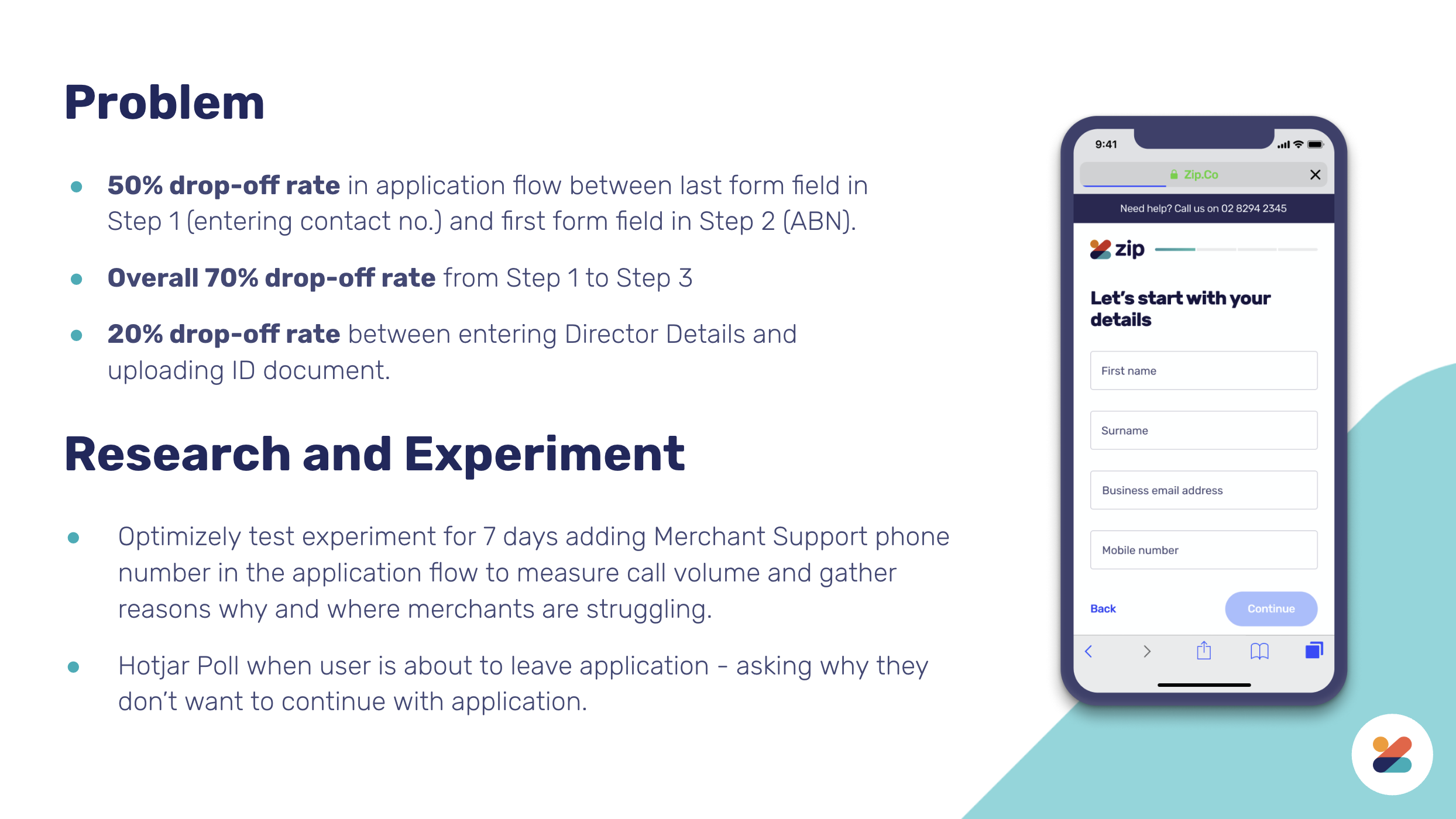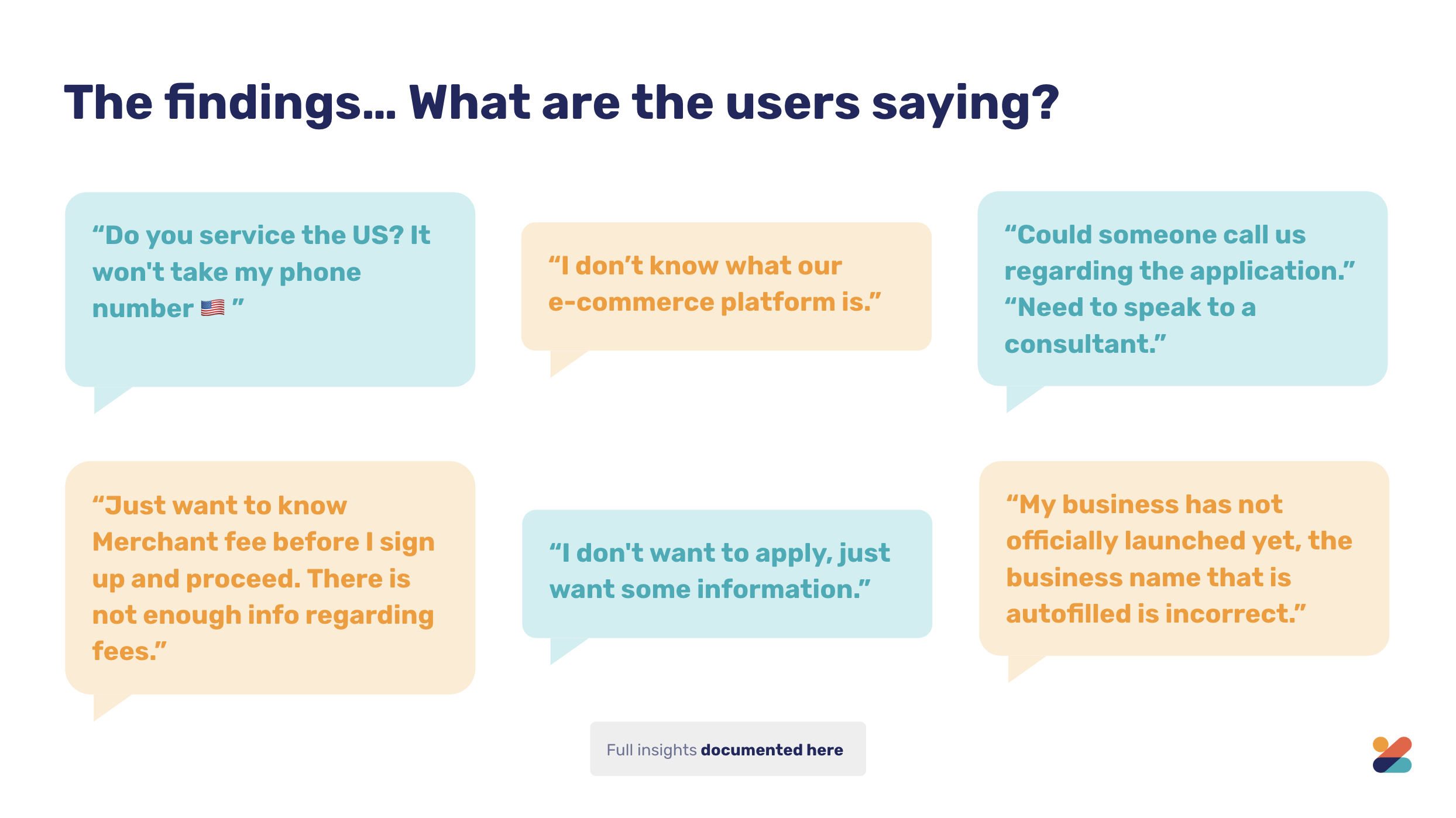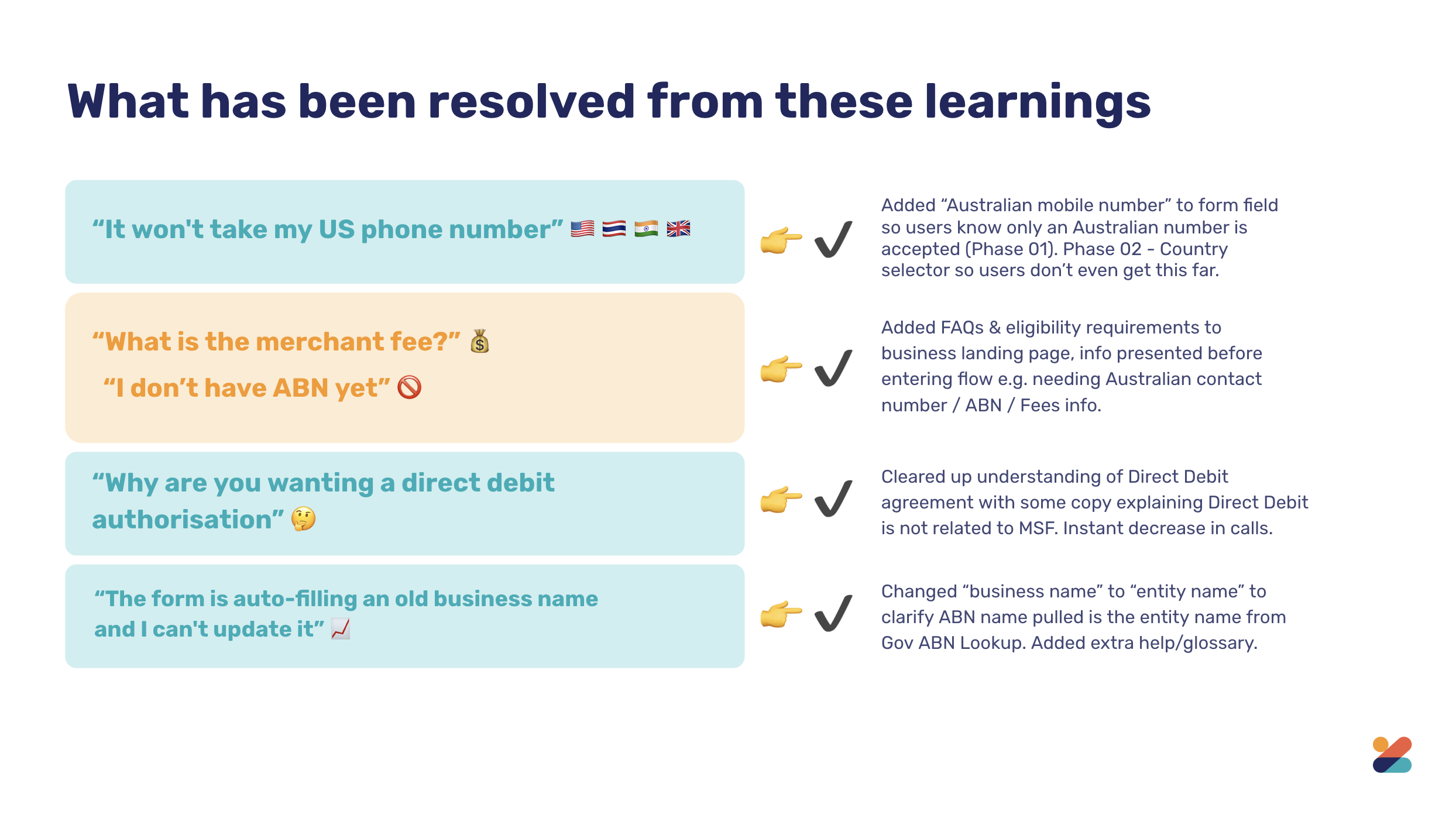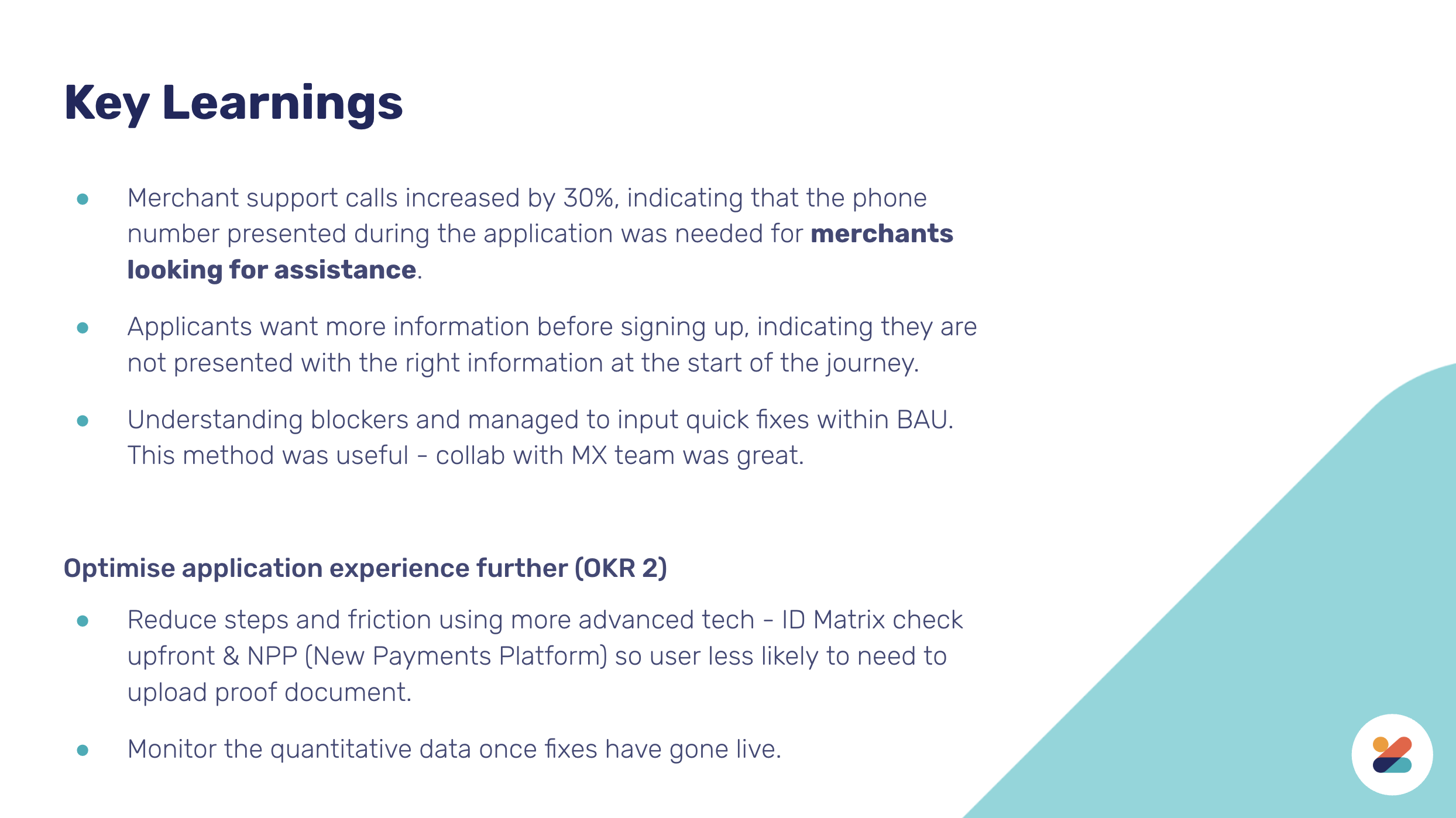ZIP
Business Merchant Adoption + Onboarding
A complete overhaul of the application and onboarding experience for business owners adopting Buy Now Pay Later payment solutions.
Delivered clearer guidance and refined visual design throughout the entire customer onboarding: intuitive UX copy, comprehensive product education, new email comms and a new self-serve onboarding hub.
OBJECTIVE
Increase sign-up and onboarding conversion for Zip's merchant application flow. Given that merchant users make up 40% of busness revenue, there was a huge opportunity for growth.
PROBLEM
• 55% of applicants were declined after the application flow.
• Majority of these declined applicants made up for the high volume of contact calls everyday.
• Manual processes and onboarding delayed applicants being approved and integrated.
USER PAIN POINTS
• Long application process and approval time of 14 days, due to manual processes.
• Poor product education from start of application.
• Emails were out-dated, unbranded and lacked informative content.
ROLE
Senior Product Designer
End-to-end design / Rapid iteration testing / UX copy writing / Responsive web / landing page / email design
TEAM
Principle Product Manager
Software Engineers x10
RESULTS
The 12-month project was divided into phases and releases for swift optimisation and monitoring of uptake, enabling quick follow-ups for further enhancements.

After the first quarter since release, there was a significant increase of 40% successful of applications.
The new automated user journey, reduced sign-up timeframe from 14 days down to average of 3 days.
From email redesign, there was a signifcant 30% decline of customer support contact regarding application.
Mapped the application user journey to identify key pain points and friction areas where improvements would create the most impact for customers.







Communicating new ideas and solutions, liaising with various organisation departments for feedback, and starting on the first phase of the new flow to be able to live test.
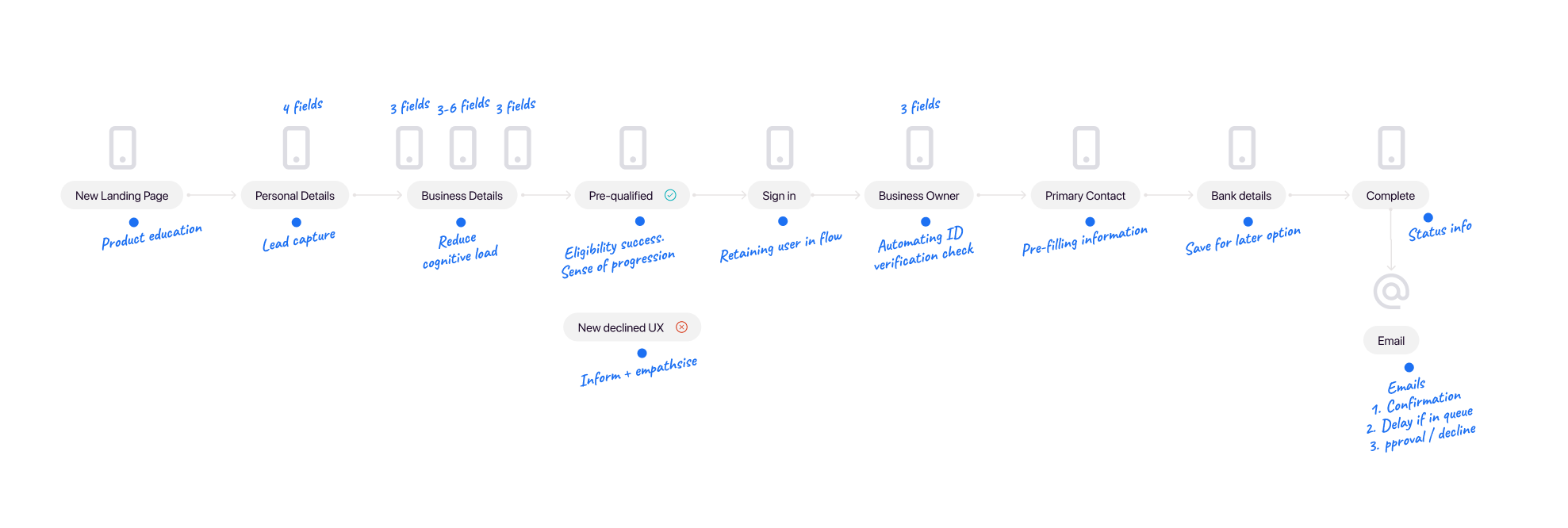
The sign-up flow was condensed from 56 initial form fields to just 10-15, efficiently identifying high-quality leads for successful applications. By eliminating unnecessary sections for initial eligibility for the product, customers experienced a streamlined process, resulting in a higher approval rate for those who completed the flow.

Clean, responsive, and informative designs were created for in-store and online business owners, providing seamless access to self-serve onboarding resources.
By replacing the previous manual process (where support teams contacted each approved merchant), the new experience streamlined onboarding, reduced support burden, and accelerated time-to-activation for merchants.
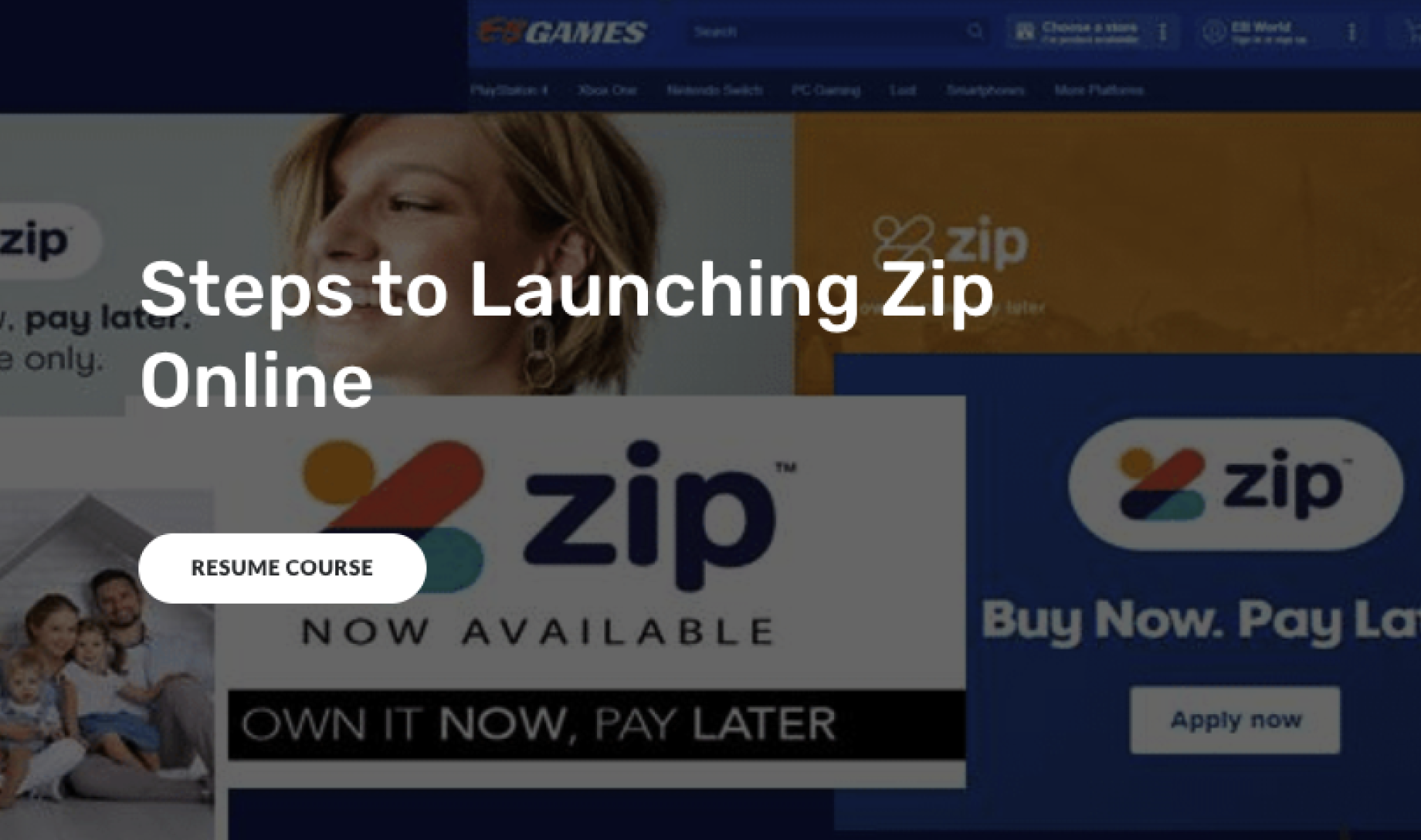
The previous experience was off-brand, outdated with poor UX that didn't align to the standard of the product.
Clean, responsive, and informative designs were created for in-store and online business owners, providing seamless access to self-serve onboarding resources.
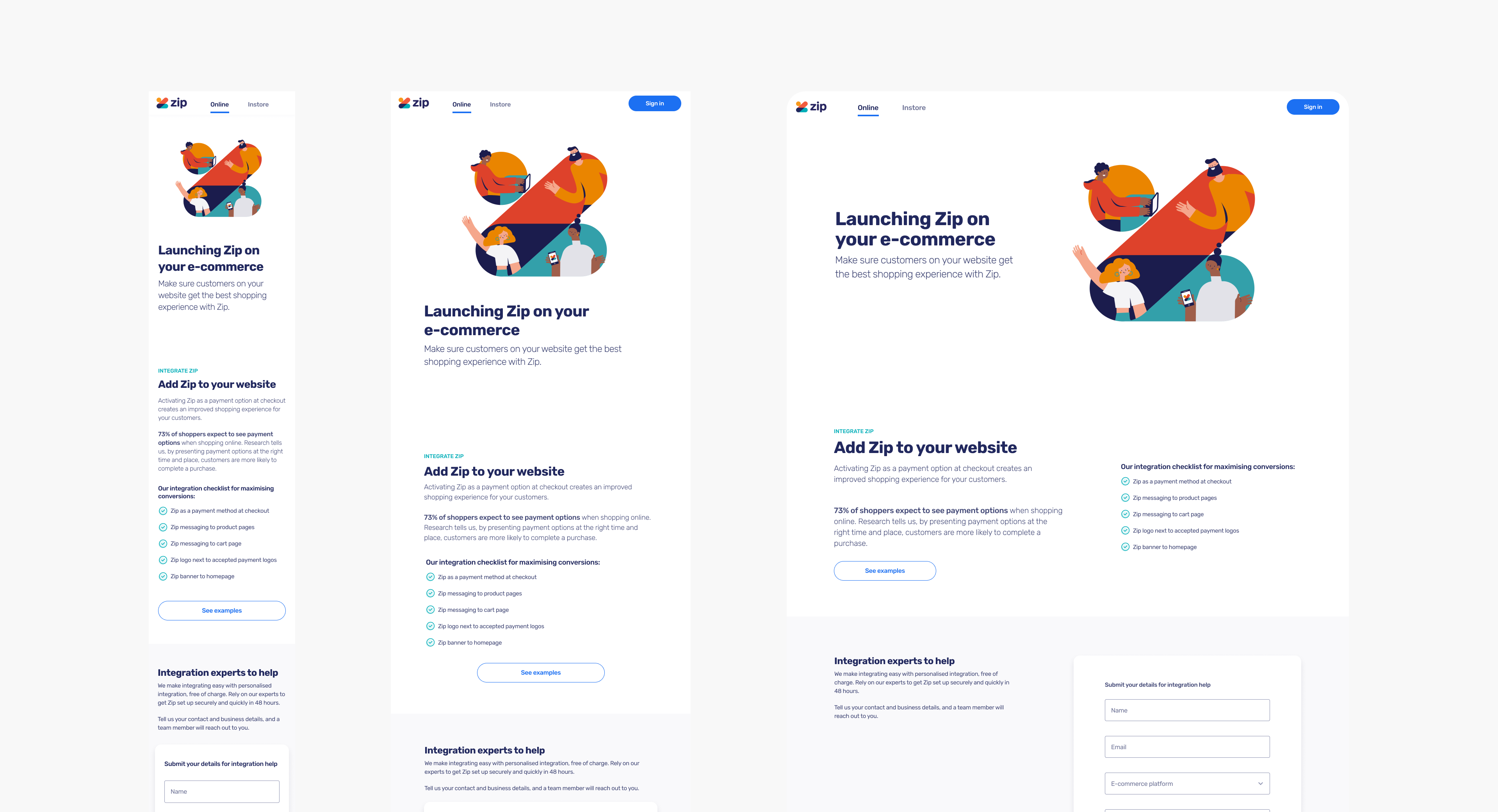
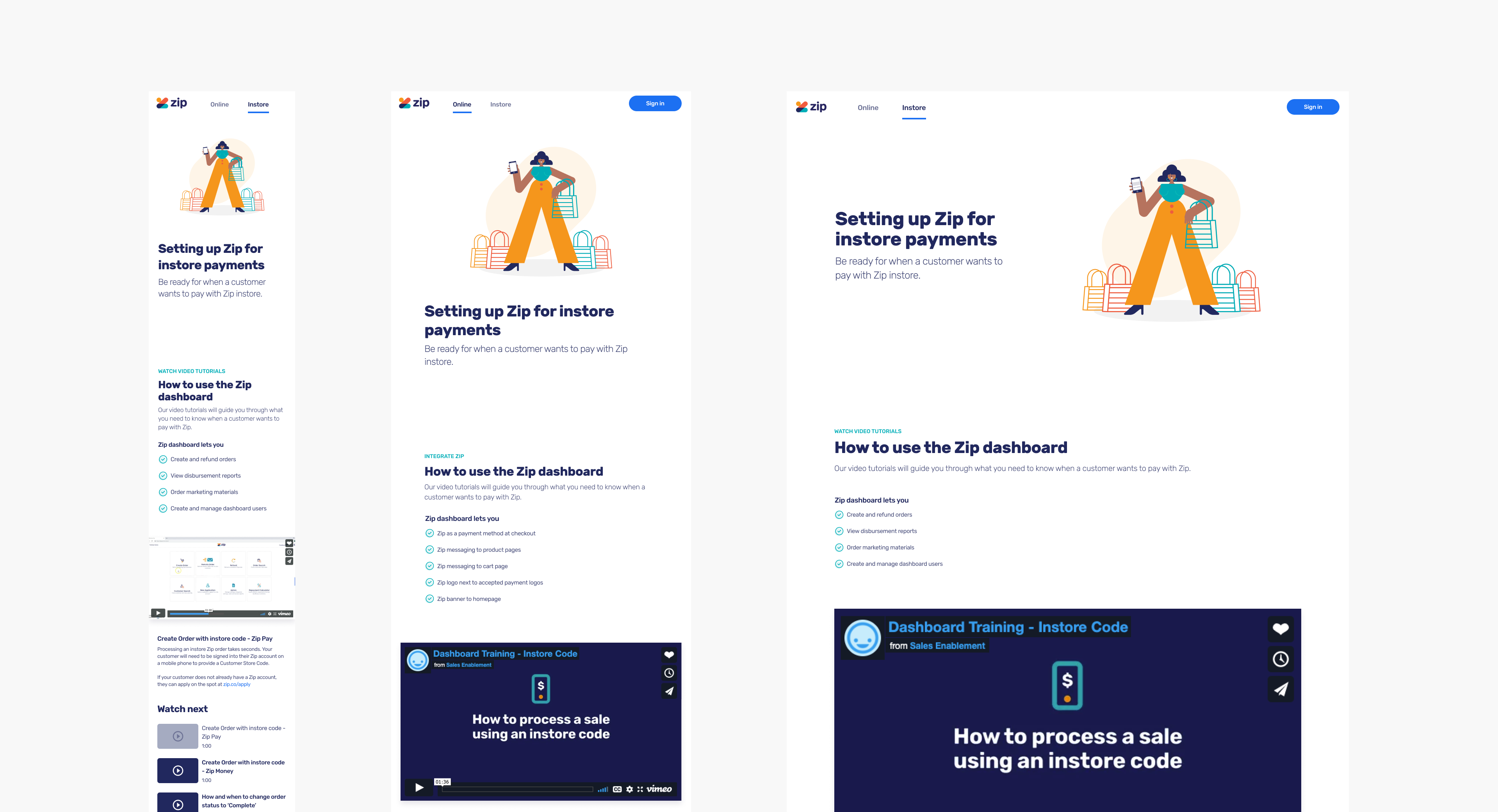
Restructured sign-up emails featured a friendlier tone of voice and updated visual design. The improved UX copy enabled customers to easily understand their application status and progress throughout the journey.
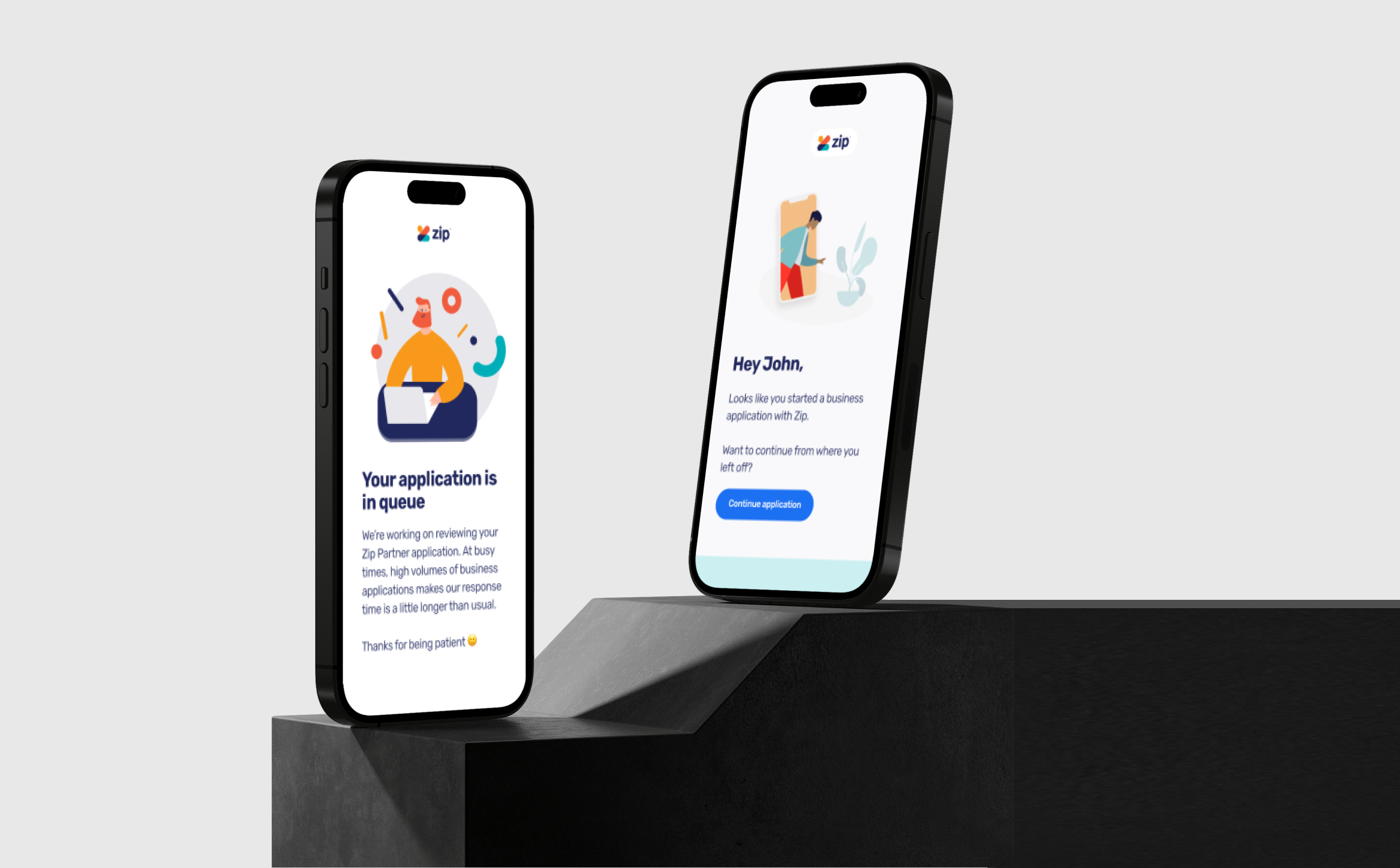
In collaboration with the PM, I mapped the complete email flow according to the new application structure, identifying where each email would trigger following user drop-offs. This mapping provided a clear framework for presenting changes to stakeholders and engineers.


The release of a new declined email significantly reduced the rate of customer support calls. The implementation of new UX copy, clarifying reasons for unsuccessful applications, led to better user understanding and decreased support inquiries for this issue.
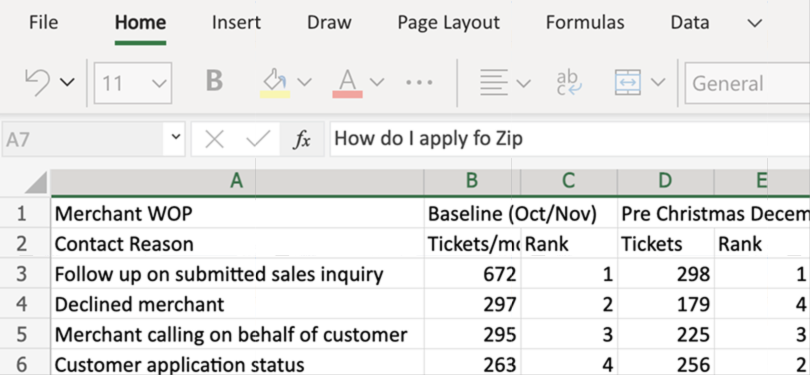
The decline email was particularly the downfall of the application flow. It raised high volume of customer support calls. CS would receive 10 of the same calls a day asking why they were declined. What I had to balance writing these emails needed to be a similar structure to CS communication so I liaised with them closely. We were not allowed to highlight specifics about their declined application - but instead a better understanding of how to get approved next time and reapplication timelines.

A substantial amount of rapid testing was implemented throughout the process of this project. Analysing the data highlighting drop-off points allowed us as a team to learn why these were and add new solutions.
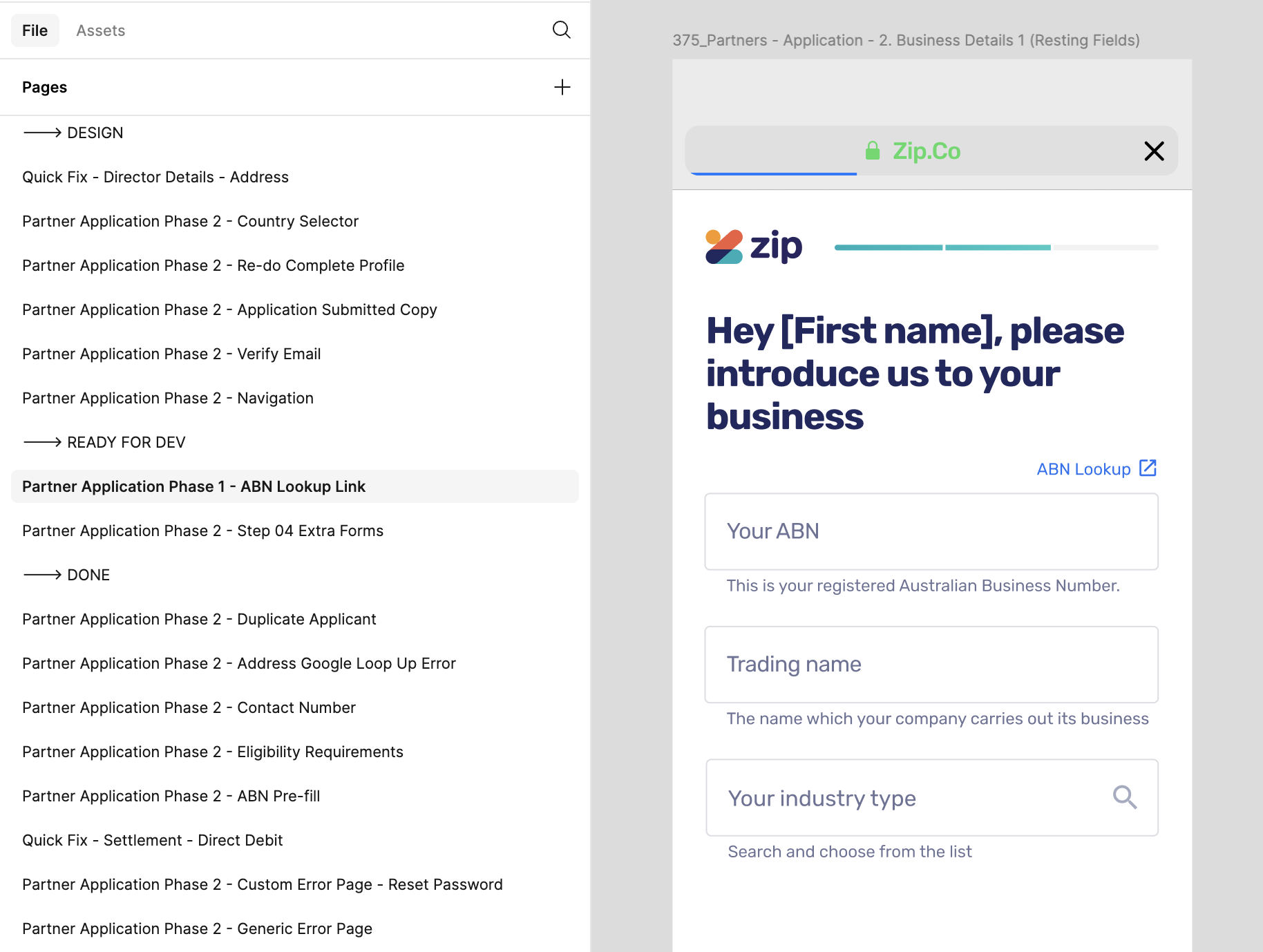
From analysing Fullstory live recordings of user behaviour, it was noticeable that when applicants got to the ABN form field, a long pause would happen - it was assumed that they're searching for their number offline or entering the official ABN Lookup website. Here on the form, we added a link for users to understand if the application timeframe lessened.

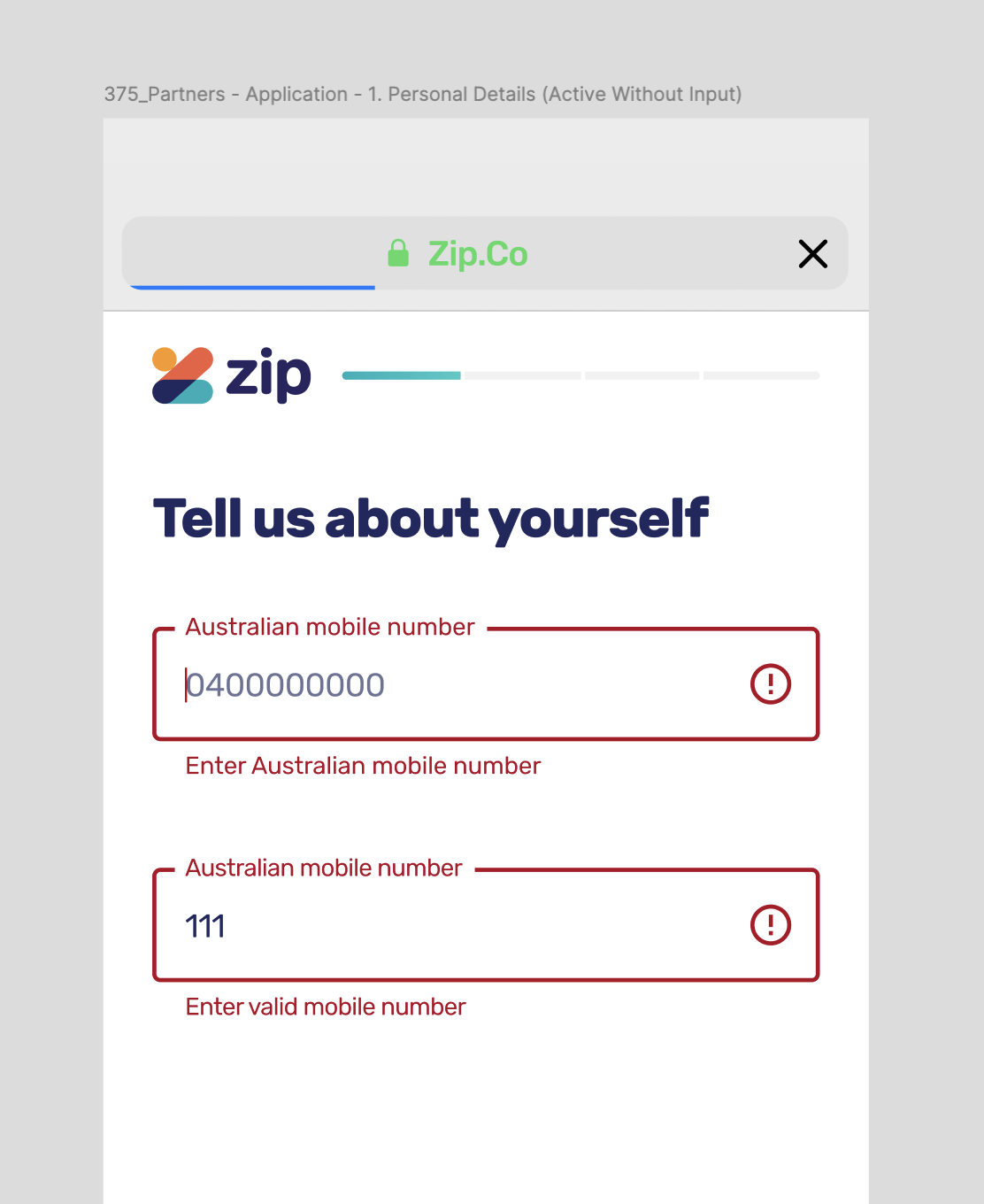
From a Hotjar poll added on the application flow, we gathered data in a CSV to understand what applicants are getting stuck on. Here was the misunderstanding what business phone numbers were valid, Australian phone number was only valid at this point.
